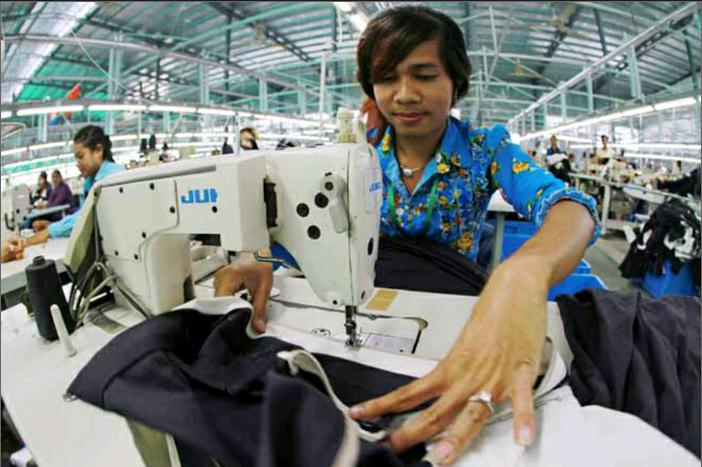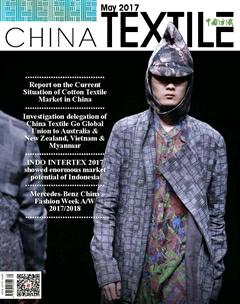Research review in Vietnam and Myanmar
By+Shen+Da

From April 23rd to 30th, organized by China Textile Go Global Union, an investigation team from China led by Gao Yong, Secretary of Party Committee and Secretary General of China National Textile and Apparel Council, has visited Vietnam and Myanmar and made a survey of the business that Chinese enterprises have established here.
They first went to Myanmar and carried out an in-depth and detailed research on Myanmar about the current situation of textile and apparel industry as well as environment environment. Myanmar has a population of 60 million, of which Rangoon accounts for 10% of the total. Since the United States gradually relaxed sanctions against Myanmar in 2011, the garment industry has gained rapid development. The exports of garment was $900 million in 2012, while it increased to $1.8 billion in 2015, with Japan and Korea a two major markets. As of the end of 2016, the employees of garment industry reached 350 thousand, and 500 garment enterprises, mainly concentrated in Rangoon. Foreign-funded enterprises and joint venture enterprises accounted for a half respectively, of which there were nearly 200 China-invested enterprises with average size of factory of about 900 people.
During the visit in Myanmar, the team investigated three China-funded enterprises: Dishang Group in Myanmar, Luthai (Myanmar) LTD., Handa (YangGon) Garments CO.,Ltd., and Thilawa Special Economic Zone. Dishang Group in Myanmar has invested to established two garment factories, and was put into operation in 2016, with a total of employees of 1,500. Luthai (Myanmar) LTD. possessed six sewing production lines with an annual output of high-grade shirts of 3 million. At present, there were more than 900 employees and over 20 management staff of Myanmar. Handa (YangGon) Garments CO., Ltd. had two garment factories, with a total employees of 2,300, and 80% of products were exported to Japan, and the rest to Europe and the United State. Thilawa Special Economic Zone was an industrial park jointly established by Myanmar and Japan. The complete infrastructure facilities, normative management practices as well as one-step service has greatly improved process of various approval and customs clearance. Investors enjoyed Special Economic Zones Act in the park, and many tax incentives were superior to other general industrial parks.
Through the research, members believed that the biggest advantage lied in labor cost, and the average wage was about $130 (calculated by 10 hours per day and insurance and other benefits were included). While the insufficiency of water and power restricted the development of enterprises. In recent years, there was a gathering effect among Chinese and Myanmar garment factories, which led to the prosperity of the nearby villages and promoted employment, so as to make the Myanmar garment industry on the road of fast development.
After the research in Myanmar, they went to Vietnam to investigate the situation of Chinese-funded enterprises. At present, there were 6,000 textile and apparel enterprises with employees of 2.8 million, accounting for 3% of total population. The garment exports amounted to $27 billion, accounting for 17% of the total, with major markets of the United States(49%), EU (27%), Japan (10%), and Korea (8%). There was zero tariffs and zero quota for the imported cotton, which was a certain comparative advantage for enterprises to make an investment in Vietnam.
They made an investigation in Vietnam-Singapore Industrial Park, and New Wide Group in Vietnam as well as Luthai (Vietnam) LTD.. At present, New Wide Group has 7 marketing positions, 6 manufacturing areas, 2 dyeing and finishing areas, 11 garment factories, 3 dyeing and printing factories, 4 weaving factories and 2 R&D centers in the world. The investment in Vietnam of New Wide Group created employment opportunities and promoted the local economic development. Up to now, Lutai (Vietnam) LTD. has provided more than 1,300 jobs with the capacity of spindles of 62 thousand, looms of 180, and productivity of 1.3 million meters per month.
On April 29, they carried out the last investigation in TEXHONG Haihe Industrial Park. TEXHONG Haihe Industrial Park is located the junction of Southwestern economic circle and the pan-pearl River Delta Economic Zone in the eastern part of Quang Ninh Province, which has an important strategic position.
The Park covers an area of about 3,100 hectares and the total investment is expected to reach $25 billion, of which infrastructure will cost $1 billion. The park aims to create a professional textile and garment industrial park, covering a complete industrial chains of raw materials, spinning, weaving, dyeing and finishing, clothing and branding.
Compared with the south, the northern Vietnam has a more stable political environment, simple folk customs, few strikes and violence. The efficiency of the local government is higher than that of the south. The southern and northern investment environment have their own advantages, so companies need to select the appropriate regional layout, based on their own business and product characteristics.
As important nodes of “the Belt and Road Initiative”, Vietnam and Myanmar are benefited from the formation of ASEAN Free Trade Area, and they have traded with many countries and regions all over the world. Through the investigation, more enterprises have a deeper understanding to Vietnam and Myanmar, even to ASEAN countries, and it also opens a new chapter for the annual investigations of China Textile Go Global Union.
- China Textile的其它文章
- Dear readers
- Calendar
- INDO INTERTEX 2017 showed enormous market potential of Indonesia
- Report on the Current Situation of Cotton Textile Market in China
- “COTTON USA: Travel in Comfort with The Cotton The World Trusts”Showcased at Intertextile Shanghai Home Show 2017
- The emerging design strength is in the ascendant

